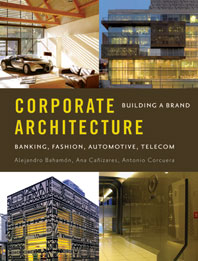Not included in the tour: the Social Security office where, more often than not, at least half of the 94 black metal chairs are filled by regular citizens waiting for their numbers to be called. And the supplicants aren’t feasting on postcard-worthy views. They’re in a windowless room with only a (slightly) canted ceiling to set it apart from thousands of other bureaucratic holding pens, in a squat four-story annex that rarely appears in architectural photographs of the 2.1-acre complex.
I mention the latter space because it’s the portion of this public building that gets the most use by the public, yet it received zero scrutiny from critics — me included — when the SFFB debuted in the summer of 2007. We reviewed the newcomer as though it were a sculpture and then moved on. Standard practice, perhaps, but in the process we ignored what sets architecture apart from other arts. Buildings are created to function as part of their physical and cultural surroundings, and they reveal themselves with the slow passage of time.
In the case of the 605,000-square-foot complex that Mayne and his firm Morphosis designed with executive architect SmithGroup, the attention-getting angle was the embrace of sustainability by one of architecture’s most swashbuckling provocateurs. Critics played up the 18-story office tower oriented to maximize daylighting and ventilation, and its cascading veil of perforated stainless steel panels, some of which snapped open and shut in response to the movement of the sun. Magazine photographs accented how the ripple of panels ricochets across a plaza to land on the roof of a freestanding café at the corner of Seventh and Mission streets, an intersection in dire need of noncriminal activity.
“Our primary interest was to produce a performance-driven building that would fundamentally transform its urban surroundings,” Mayne says in the booklet released by the General Services Administration to mark the project’s completion.
But the heroic story line left out the mundane Social Security offices. It also neglected to mention that the sidewalk walls of the café are thick concrete, a security measure that undercut the café’s come-hither appeal. The café attracts few nongovernmental patrons — because of not only the forbidding shell, I suspect, but also the clumsy low-ceilinged interior that provides an oppressive counterpart to the rooftop show.
There have been other glitches. The veil’s movable panels have been locked in a closed position for months while adjustments are made to the building control system. Public access to the Sky Garden and other interior spaces in the tower is crimped by a security gantlet that requires you to pass through a metal detector, then sign in and show your ID.
As for the hoped-for 26 percent reduction in lighting costs, “the performance has gotten better but we haven’t yet hit that 26 percent baseline,” says building manager Warren Sitterly, “primarily because people’s behavior has yet to change.” You can lead a workforce to sustainability but you can’t make it green.
Make no mistake: I’m glad San Francisco has this Mayne attraction. I love the energy it brings to the skyline, the way it proclaims green design needn’t be meek. There’s a kinetic grace in such small touches as the glass fins on the northwest-facing wall that glow in the afternoon, illuminated by the sunlight they diffuse in a reliably low-tech way. I even take solace in the ivy that has begun to soften the restaurant’s blunt walls.
The San Francisco Federal Building had its close-up, its moment as an object of architectural fascination. Now it belongs to the city as a whole. Ultimately, that’s the perspective from which a major building’s success or failure is judged — whether or not we critics pay attention.
San Francisco Chronicle Cityscapes: San Francisco and Its Buildings (Heyday, 2011).





